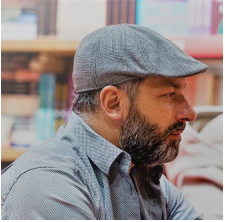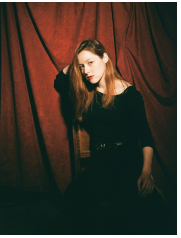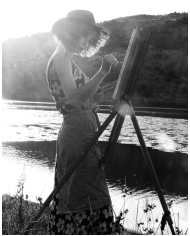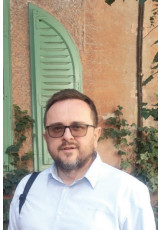Agron Rustemi (1981) is an Associate Professor and Vice-Dean at the Faculty of Contemporary Social Sciences at the South East European University, Tetovo. Agron Rustemi was born on January 31, 1981 in Tetovo. In November 2012 defended the Doctoral Dissertation “Comparative Analysis of Models of Social State in Great Britain and Germany” and received the title Doctor social work and social policy.
His scientific interests include social research, social policy, public policy employment and career development. Key qualifications in social policy and social protection, career development, public policy, and research methodology. We are publishing a part of the paper on which his intervention in the conference was based. The full version will be included in a book that will be published soon by LOJA Centre with the contributions for this conference.
Multiculturalism, theoretical approach
Among the most widely used expressions in today’s post-modern society are the notions like multiculturalism, multi-culture, multi-culturality, etc. The issue of multiculturalism, which has its origins in the western social and political anthropology, primarily the Anglo-American one, is a problem of the communication among the members of different cultures, ethnicities and religions. Multiculturalism fosters differences by emphasizing the need for tolerance and uniqueness of the groups that seek identity and protection within the tolerant society. According to Andrew Heywood, this notion is a descriptor and normative for cultural diversity, which is a result of the presence of two or more groups in a society and whose convictions and practices create different collective identities.
Multiculturalism is closely connected to the diversity of communities, which originates from racial, ethnical and linguistic differences, with the affirmation that differences are the pillars of the human unity. That is a philosophy of respecting the individual as a human being or God’s creation, as H. Goodings says, in the freedom of the identification of the self, you are either a black or a white man, a man or a woman, an American or a French, a Muslim or a Christian, etc. One of the definitions of multiculturalism in the anthropological and sociological literature is the following: “Multiculturalism is a policy with which public relations among different cultures of a society are regulated, including the way of utilization of languages and symbols.”
The topic on multiculturalism represents an important part of political programs in countries throughout the world and has an impact in bolstering the revision of public policies with the aim of finding a modus that is the most appropriate in fulfilling the requirements of different communities. From a normative point of view, it means recognition of differences, of the right to respect different cultures and the benefit of the whole society from moral and cultural differences. The well-known thinker, Charles Taylor, says that multiculturalism is a policy of recognition, an antipode of non-recognition or wrong recognition, which can be very dangerous for the society, can include means of humiliation and lock the person in an unreal, deformed and reduced shape of existence. Having in mind the fact that most people tend to stay close to their culture, the thesis of multicultural countries implies the idea that the special cultural-ethnical communities need to enjoy their rights, whereas the institutionalization of those rights is the best way to achieve completeness of every society.
Multiculturalism accepts the importance of the religion, ethnicity, values of the lifestyles, and the feeling of being valued by both individuals and groups. Diversity and multi-layering are inseparable parts of every community in every phase of history. Human societies are multicoloured and multicultural says Martinello: “Only cloning people by a particular matrix will enable the formation of mono-cultural and mono-identity societies”.[1]
[1] Ali Pajaziti, Fjalor i sociologjisë, Logos-A, Shkup, 2009, pg. 431-432.
Multiculturalism as a tool for social cohesion
It is known that the Balkans is a soil that in the recent history, especially in recent decades is a synonym for turbulent conditions, for intolerance, conflicting, for aggressive nationalism and for cultural differences that cause excommunication of the other, where they still watch over mythological leviathan. It is no accident that the term homo balkanicus denotes the individual that is part of a group that has not succeeded to achieve empathy with the neighbour and is oriented toward extreme politicization and partiality of the society. Former Yugoslavia was a sui generis example of experimentation with diversity and with multiculturalism. From 1945, the system implemented a policy which enabled mixing of cultures, while in 1952 was promoted building of the Yugoslav culture based on the interaction of all Yugoslavian national cultures. Pavkovic called this policy interactive multiculturalism, which after the reaction of the Slovenian intellectuals was abandoned. At the beginning of the 1960’s that policy is replaced by strict segregate multiculturalism which does not allow mixing and creation of “Creole” culture but seeks equality and cultural development of each nation and nationality. Later, from the early 90’s, it follows aggressive nationalism that was a factor of fragmentation of the former Yugoslavia.[1]
The Republic of North Macedonia presents a historical, political, economic and cultural reality of the Balkans. It is a part of this geographical area known for its ethnic and cultural diversity. Some authors have characterized the Republic of North Macedonia as the epicentre or the heart of the Balkans. In all the periods of the history of humanity, the territory of the Republic of North Macedonia has been part of great empires and civilizations. Due to favourable geographical position, as a crossroad of civilizations and religions, in history it is known as “Catena Mundi”.[2] North Macedonia is a cultural mosaic, with a multi-ethnic and multi-confessional basis, unitas multiplex; it is a corridor where East and West, Islam and Christianity, are merged. This illustrates the symbolism of the cultural components of the Islamic and Orthodox provenience, mosques, churches that meet in the four sides of this country.
[1] Aleksandar Pavković, “Multikulturalizam kao uvod u rasparčavanje države – slučaj Jugoslavije”, Sociološki pregled, 1998, vol. 32, No. 2, pg. 155-170.
[2] Ferid Muhiq, Shkupi – kryeqendra e shtatë portave, Skenpoint, Скопје, 2007, pg. 4.
The cultural identity of North Macedonia is very complex, a multicultural society, where different ethnic (Macedonians, Albanians, Turks, Roma, Vlahs…) and religious groups (Orthodox Christians, Muslims, Catholics…) lived in harmony throughout centuries. However, in recent decades the ethnicization of the state created a gap between two dominant cultural elements: Macedonian and Albanian, respectively Orthodox and Muslim, which up to now are in a condition of latent and manifest contradiction and search for modalities for creation of an applicable and sustainable policy of cultural diversity or cultural pluralism. The perception of otherness, i.e. difference, has become one of the most important issues in the 21st-century.
The Ottoman Empire defines the cultural diversity by defining the cultural and religious rights of the non-Islamic (Christian and Jewish) communities. This system called the “millet” system (religious communities), enabled the regulation of the ethical, religious and language issues, promoting tolerance for everybody.
In the post-Ottoman period, the things started to change. Different nationalisms generated intolerance, because the process of forming a nation (nation building) was based on the premises of exclusivity, ethnocentrism and ethnic nationalism. During the socialistic period, the question of human rights and the attitude towards different cultures was neglected. With the 1974 constitution, Macedonia was defined as a pluralistic state and 1989 and 1991 are years when politics of a national state were designed. This trend was changed after the conflict in 2001, when the Ohrid Framework Agreement actually redefined the country according to a multicultural concept, which meant promoting a civil and non-ethnical society (Engstrom). But during the last couple of years, the new developments are starting to go in negative directions, especially between the two biggest ethnic communities. This phase revealed the fact that our democracy is a limited democracy (I. Aceski) and that the actual politics resembles the concept of F. Zakaria of illiberal democracy.[1]
In North Macedonia, in many cases, two truths are being promoted, which are utterly different, and continue to live; each one in its own social reality, contributing so little in what we call a plural society. This concept is in contradiction with the multicultural democracy, which is an antithesis of the national state and which requires the citizens of the Republic of Macedonia to denationalize their state and live in a cultural deconstructivism (N. Frazer) or cultural relativism.
[1] See: Fareed Zakaria, The Future of Freedom: Illiberal Democracy at Home and Abroad, New York, 2003; http://www.foreignaffairs.com/articles/53577/fareed-zakaria/the-rise-of-illiberal-democracy
North Macedonia is a part of the “historical part” called the Balkans, where contradictions and complexities persist in the historical sense of the word. Amy Gutmann says that it is difficult to find a democratic society or a society in a process of democratization, which is not a focus of debates in relation with the identity and culture. In North Macedonia, there are tendencies of closing the ethnic and religious communities inside the political walls, the educational, informative, marital, demographic as well as economic ones, a fact that clearly speaks of ethnic exclusivity. Historically seen, both greater ethnic groups don’t have a long history of ethnic animosity; their mutual living is possible and necessary.
There is a necessity of a bigger exchange of information in all life spheres, comprising here the culture as well. According to some analysts there are four instruments that can be used to reinforce the cultural exchange: 1) a greater frequency of inter-human contacts 2) an unconditional defense of human rights, 3) the implementation of basic political frames; 4) the help of round tables open for the audience to discuss inter-ethnic relations. Universities should be places where the openness, transparency, tolerance and cosmopolitanism are cherished, which will further be shown in the other societal categories, from the demos to the elite.
As far as multiethnicity and multiculturalism is concerned, there is a need to find feelings for building bridges in order to live with the neighbour in a mutual respect; there is a need to understand that one-colouredness has sense only in terms of multiple forms and colours. The languages and the difference between them should be sacred symbols and the fight against them is a fight against naturalness.







